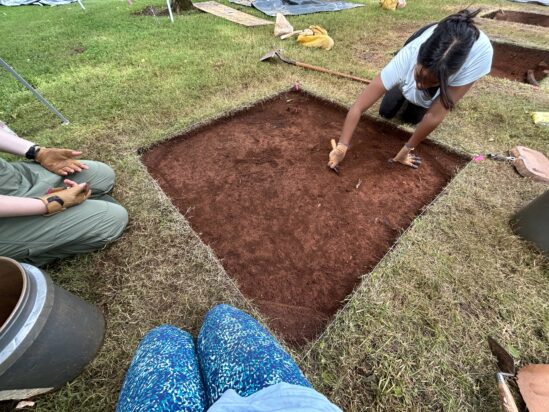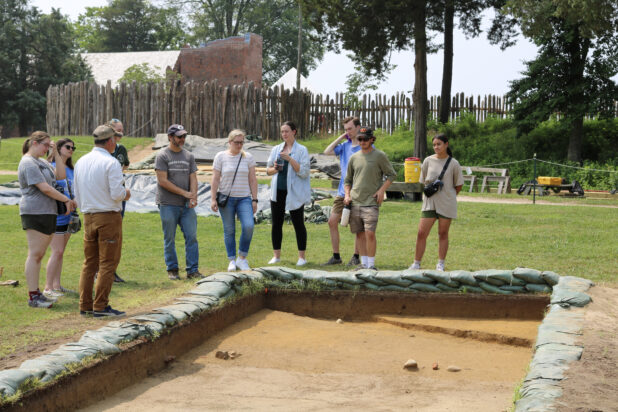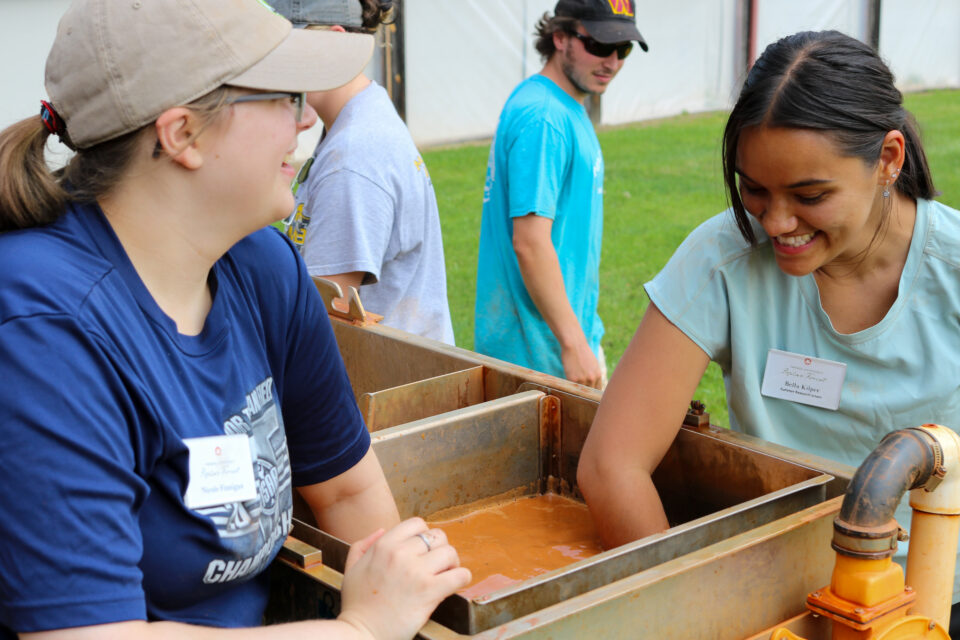Archaeology Blog
New Hire Highlight: Bella Kilper
By: Bella Kilper
This past summer I had the pleasure of serving as the Summer Research Intern for the archaeology department at Poplar Forest. Having just graduated with my Bachelor of Arts in Anthropology from Clemson University, this position was the perfect opportunity for me to continue utilizing my archaeological experience and gain new insights on archaeological research at a different institution and type of landscape. I began my archaeological training at the Esseneca/Fort Rutledge site in Clemson, South Carolina. This site is much smaller and less documented than Poplar Forest, but the humid summer and red clay landscape of this site definitely set me up for success as I transitioned to Poplar Forest. I was excited to be a part of the 1857 Slave Dwelling Project and work alongside the field school through this internship. The project is preservation-oriented and investigates such a complex structure and surrounding area that is super unique and perfect for enlisting the help of a field school. Although this wouldn’t be my first experience working at a field school, it was fun to be able to learn about Poplar Forest alongside the students and assist in teaching archaeological techniques and procedures I was already familiar with.
As an out-of-state intern, the field school lectures and field trips helped me get familiar with Virginia archaeology across the state, especially with sites that have a historical connection to Poplar Forest or are completely unique to sites I’ve been to before. As excavations ramped up, it was a joy getting to teach archaeology to the students and discover such artifact-rich units along the way. So many cool objects popped up along a strip of units we were excavating that extended out from the southeast corner of the building. Past research of this area indicated that somewhere near was a midden related to the structure, so when we came down on layers with many, typically broken, objects we figured we were running into the extent of that midden. These artifacts included beautifully decorated ceramic sherds, larger glass bottles and shards with maker’s marks, and interesting (sometimes confusing) metal tools and other objects used by the African American residents of this brick building in the decades following Emancipation. These artifacts translated into lab work as well that gave the students the chance to see all sides and steps in the archaeological research process. Outside of typical archaeology day-to-day activities, we also had the opportunity to interact with the public about the site during weekly tours and public days. The field school produced so much data and insight for the project that will be essential to its future endeavors and I could not be happier to have assisted in this great work.
As the intern, beyond and within the field school, I continued to learn from the experiences of the archaeological staff while considering what my next steps in my anthropological career path would be. I had decided to take a gap year before pursuing a master’s degree and was hoping to fill my next months with an opportunity as illuminating as this internship. As I mentioned, the 1857 Slave Dwelling Project is complex and will take time to get through, especially after the field students are gone. So with great enthusiasm, I was offered and accepted a position as an Archaeological Field Technician at Poplar Forest to specifically help with the excavations necessary to continue the preservation of the 1857 Slave Dwelling. Whether in the lab or in the field, I’m happy to continue to be a part of this team and uphold the values of Poplar Forest as a whole in my new position.


